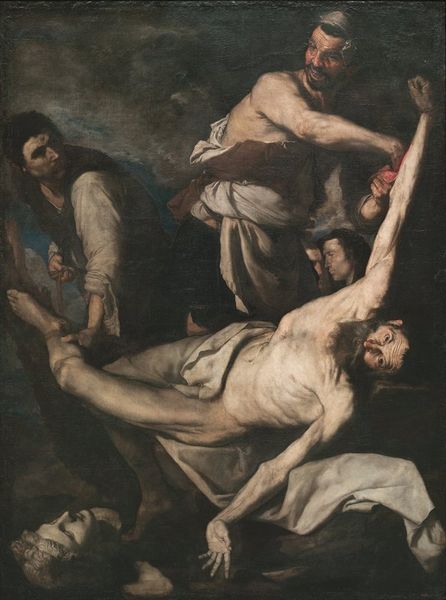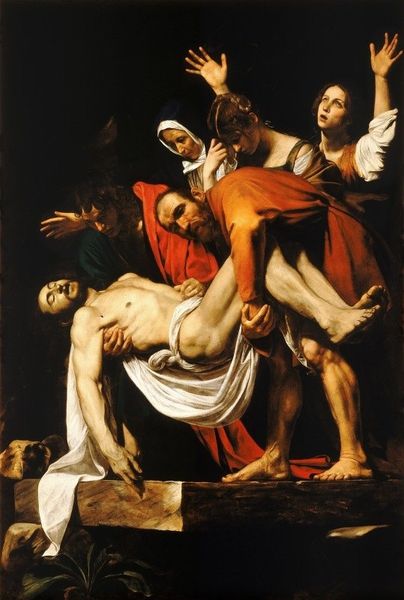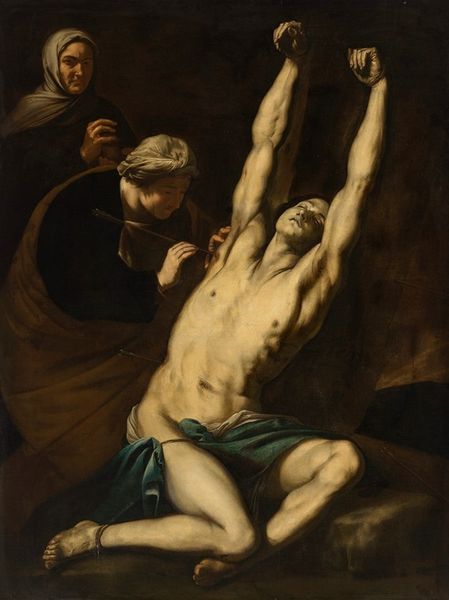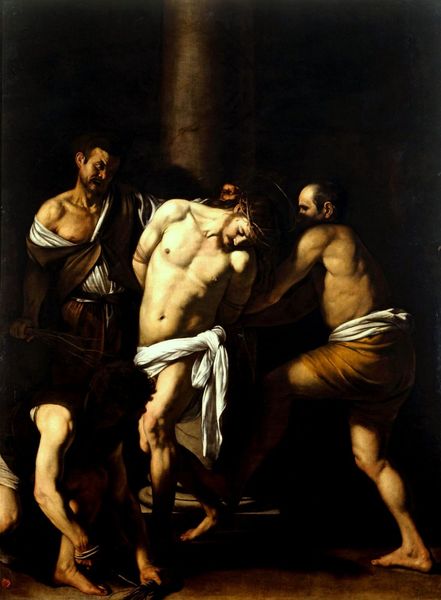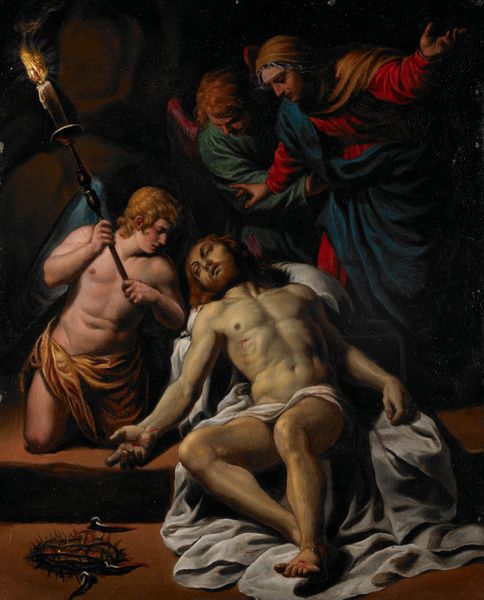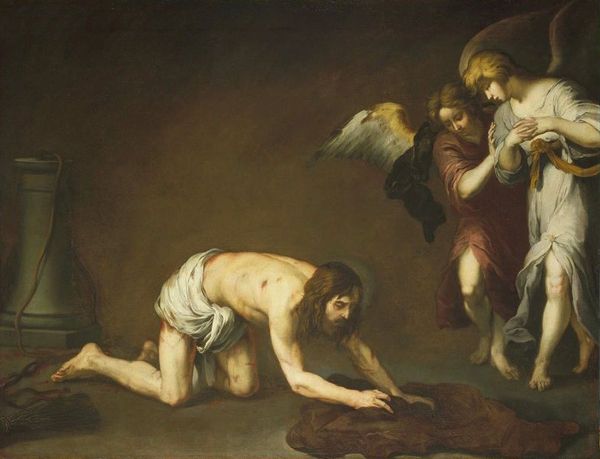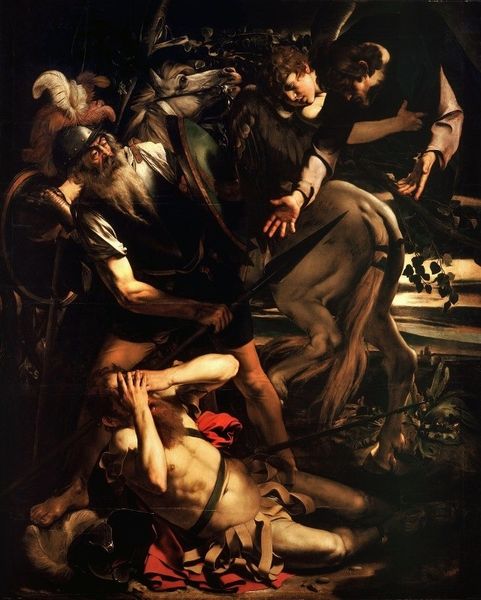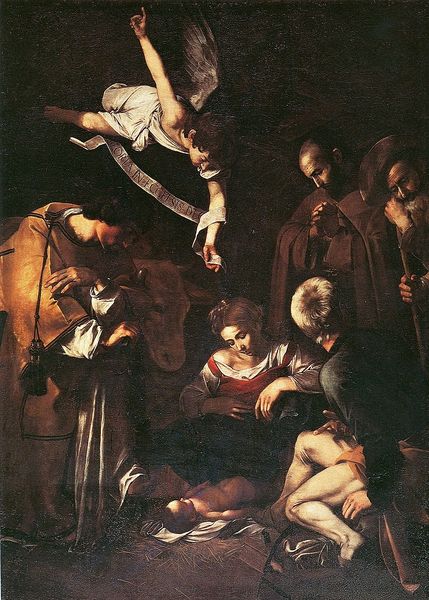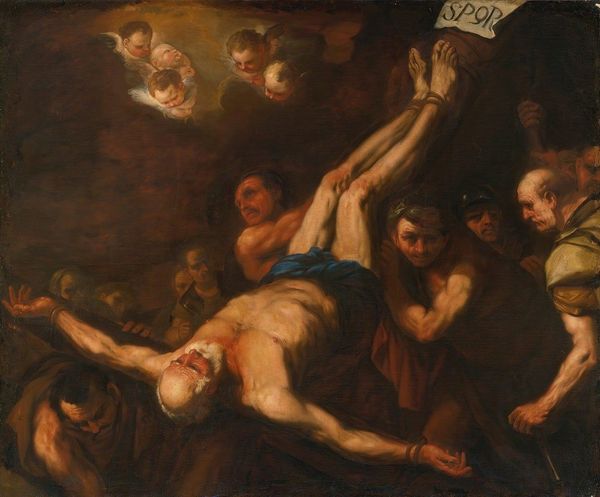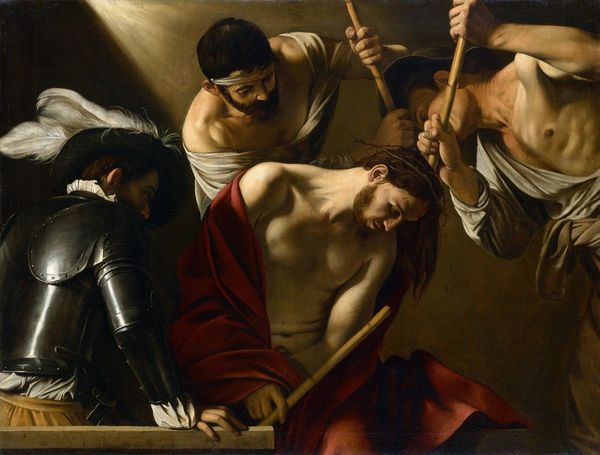
painting, oil-paint
#
portrait
#
spotlight colour
#
baroque
#
painting
#
silhouette
#
oil-paint
#
deep shadow
#
figuration
#
dark silhouette
#
dark shadow
#
chiaroscuro
#
chiaroscuro
#
blur shadow
#
history-painting
#
backlit figure
#
dramatic lighting and pose
#
light and shadow play
Copyright: Public Domain: Artvee
Curator: Caravaggio's “Crucifixion of Saint Peter," painted around 1600, powerfully captures a pivotal historical moment. Editor: It's brutal. The figures are contorted, strained. The entire composition, with its strong diagonals, feels unstable, about to collapse. Curator: Look closely at the laborers. Caravaggio's attention to their musculature and the palpable strain suggests a commentary on the working class – those tasked with the grim realities often unseen. Consider how their labor contributes to the martyrdom narrative. Editor: But isn't the real drama in the stark contrast between the highlighted figures and the deep shadows? This intense chiaroscuro is classic Caravaggio. The spotlight focuses our attention with ruthless precision. It forces us to see. Curator: Absolutely. And while that light is certainly dramatic, it’s also carefully deployed. The raw materials – oil on canvas, pigments painstakingly ground – were brought together through labor under very particular conditions. The guilds, the patronage system, these structures defined artistic production. Editor: I’m more struck by the way the forms themselves seem to emerge from the darkness. It’s not just about illuminating a scene; it's about how light defines form and manipulates space within the picture plane. Curator: However, that manipulation is intertwined with social meanings. Caravaggio's paintings were controversial because he depicted saints as ordinary people, challenging existing social hierarchies in art production. Think about how subversive it was to ennoble the common laborer in such a starkly monumental fashion. Editor: Subversive, yes, but also theatrically composed. Every angle, every muscle, every strained expression is crafted to maximize emotional impact on the viewer. The dark palette serves not just to create depth but also to evoke a specific mood – one of impending doom. Curator: Exactly! Consider the artist's own tumultuous life. His paintings mirrored the violence and instability he knew firsthand; “The Crucifixion of Saint Peter" speaks to that broader historical and social context of disruption and conflict. Editor: True, but within that turmoil, we see an almost perverse beauty in the painting's visual language—the push and pull of light and shadow, the carefully calculated gestures, creating a formal drama as compelling today as it was 400 years ago. Curator: Seeing how material conditions shaped Caravaggio’s production gives new context for his emotional narratives. Editor: For me, understanding his compositional genius creates a richer appreciation for this drama.
Comments
No comments
Be the first to comment and join the conversation on the ultimate creative platform.
